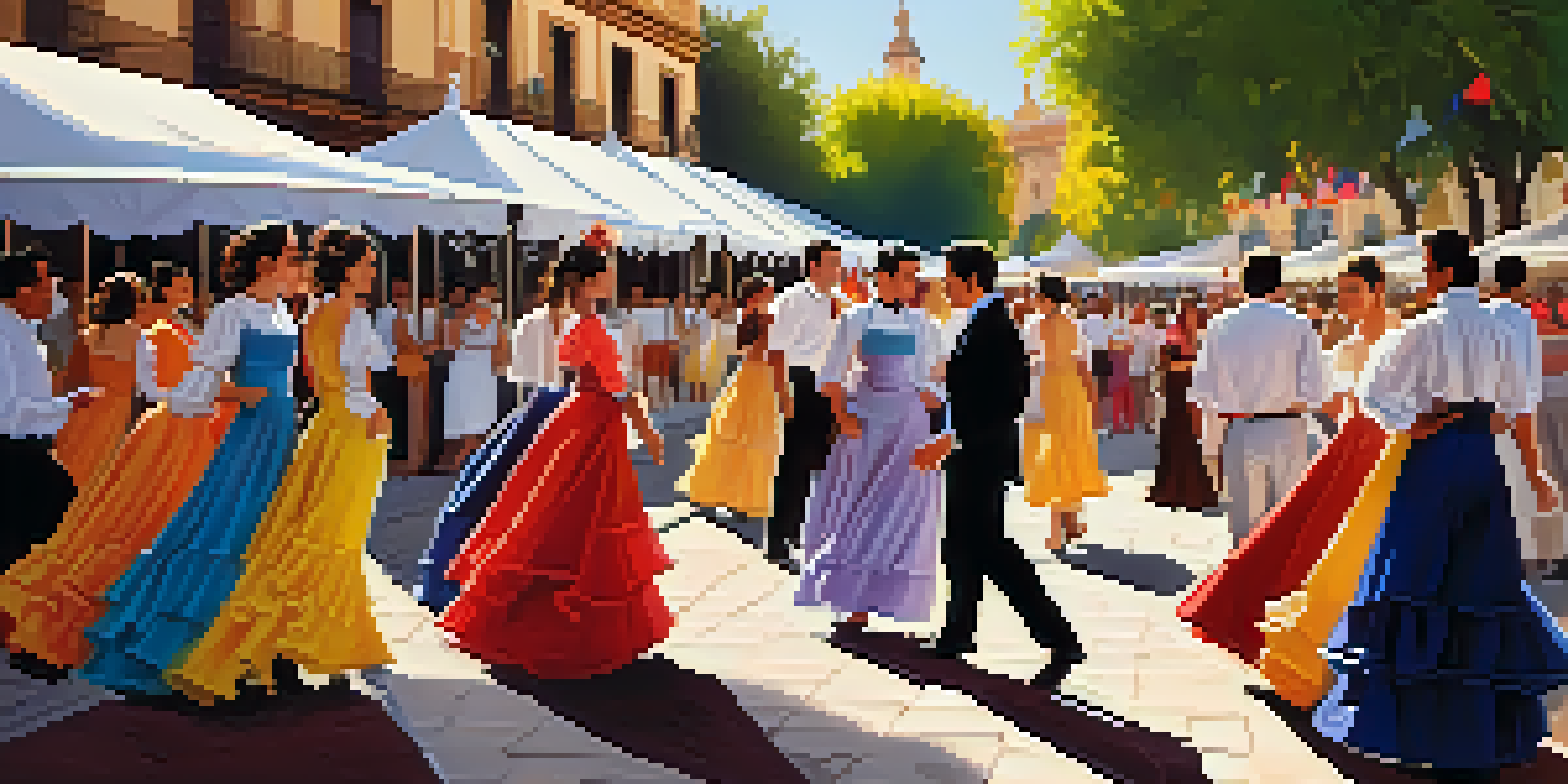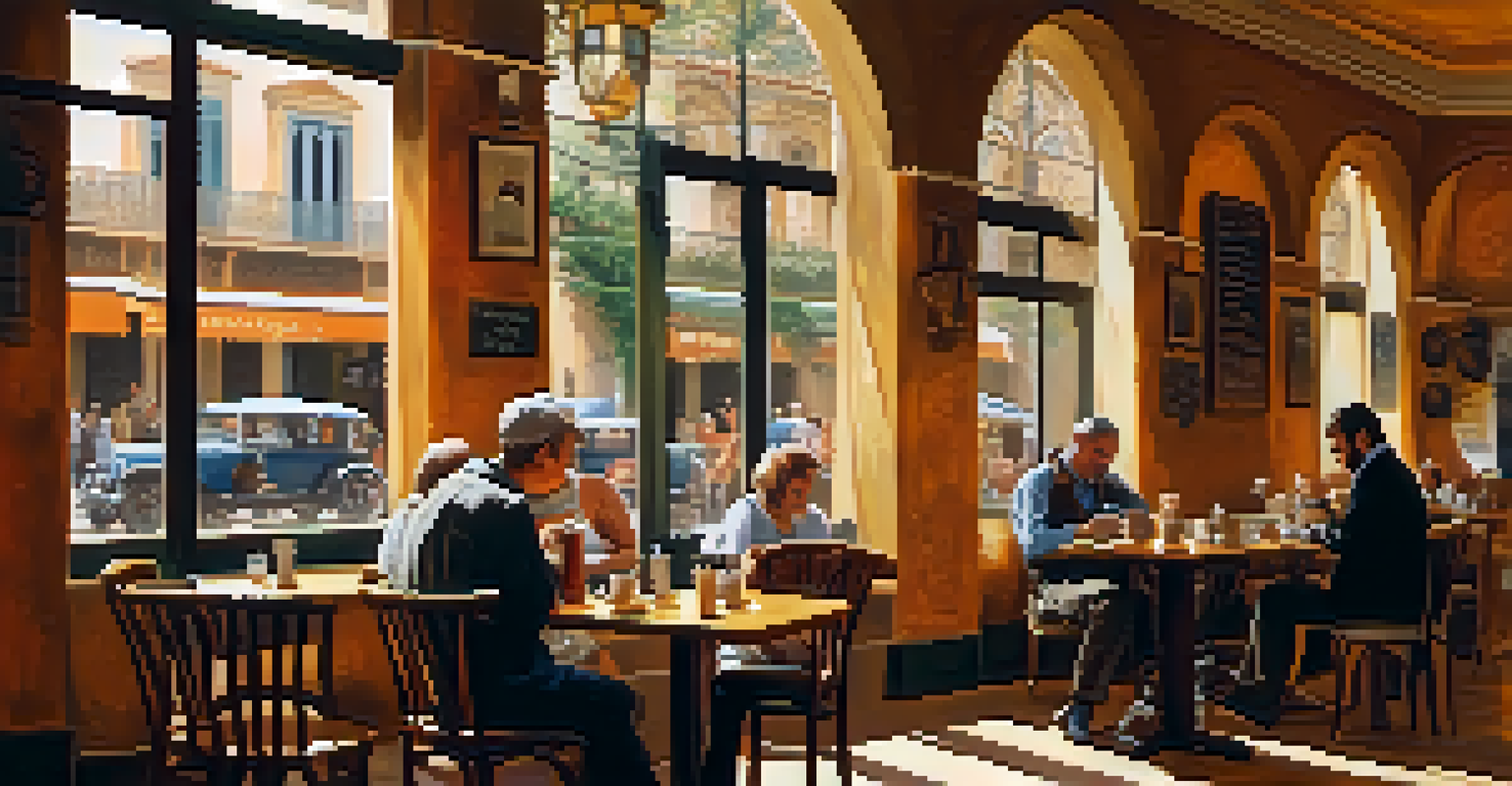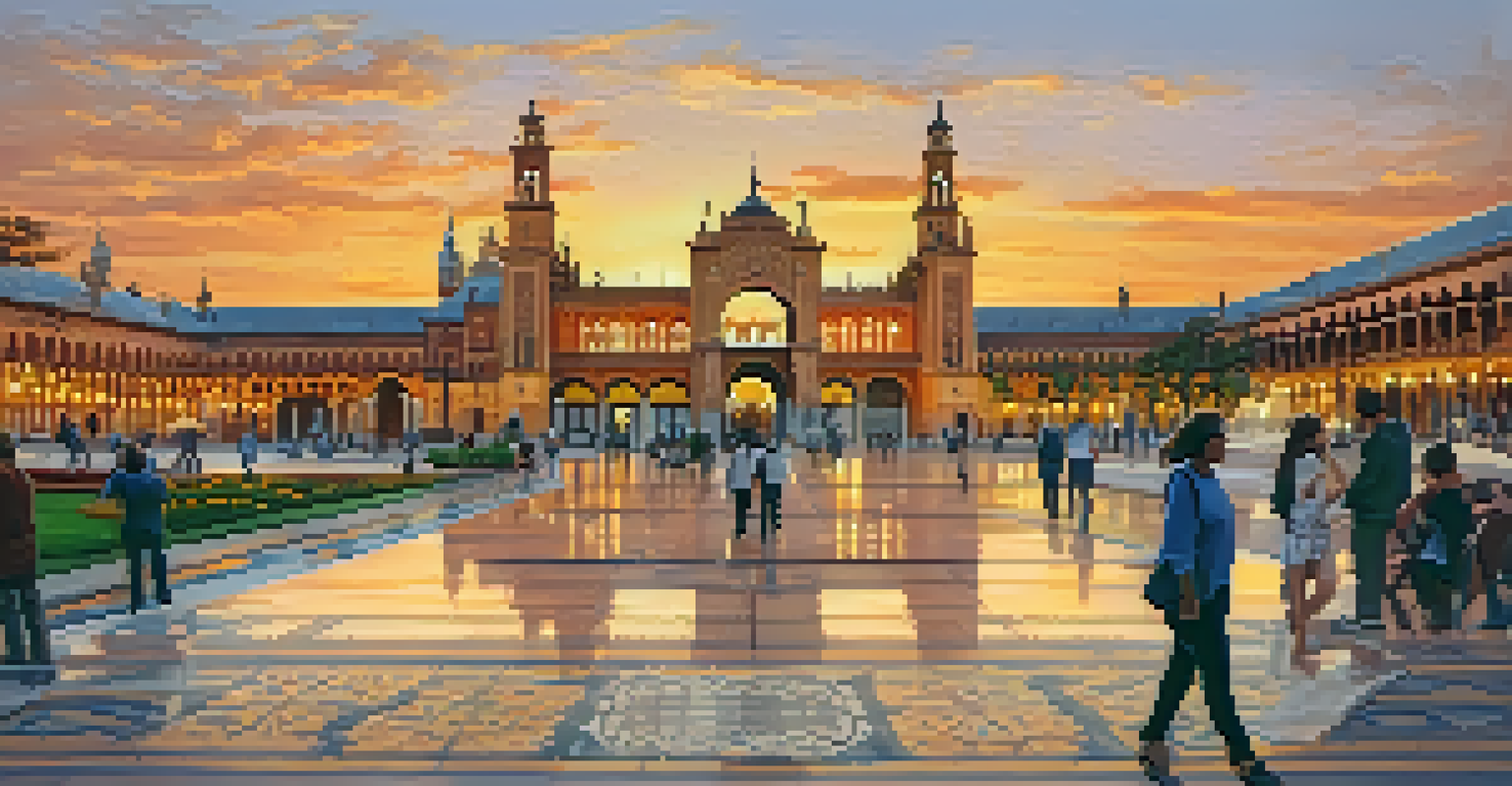Seville's Literary Heritage: Writers and Their Inspirations

The Enchanting Streets of Seville: A Literary Landscape
Seville, with its winding streets and vibrant plazas, has long inspired writers and poets. The city's unique blend of cultures, history, and architecture creates a backdrop that sparks creativity. From the majestic Alcázar to the serene banks of the Guadalquivir, every corner of Seville tells a story, inviting artists to capture its essence.
Seville is a city that inspires the writer's soul—its streets are a canvas, and its culture, the paint.
Writers often find themselves enchanted by the city's flamenco rhythms, which echo through the streets. This passionate art form has influenced countless literary works, infusing them with the same energy and emotion felt in a live performance. As a result, Seville doesn’t just shelter writers; it becomes a character in their narratives, full of life and inspiration.
Moreover, the warm, sunny climate and the vibrant colors of Seville create an inviting atmosphere for reflection and creativity. Whether sitting in a café or strolling through the gardens, many authors have found their muse in the city's charm, turning personal experiences into profound literary expressions.
Historical Figures: Writers Shaped by Seville
Seville has been home to numerous literary giants, each leaving a distinct mark on the city's cultural fabric. One of the most notable figures is Miguel de Cervantes, who found inspiration for his legendary work, 'Don Quixote,' during his time in the city. His experiences in Seville reflect the complexities of human nature and the whims of fate, resonating with readers even today.

Another influential writer, Luis de Góngora, emerged from Seville's vibrant arts scene in the 16th century. His innovative use of language and rich imagery transformed Spanish poetry, showcasing the city's intellectual depth. Góngora’s presence in Seville helped elevate the city as a center of literary creativity, attracting other artists and writers.
Seville: A Writer's Muse
The city's vibrant culture, rich history, and stunning architecture provide endless inspiration for both classic and contemporary authors.
Contemporary authors, like Antonio Muñoz Molina, continue to draw from Seville's rich historical tapestry. His novels often weave the city's past with personal narratives, highlighting the ongoing relationship between place and identity. Through their works, these writers keep Seville’s literary heritage alive, inspiring future generations.
Flamenco: The Soul of Seville's Literature
Flamenco, an integral part of Seville's cultural identity, serves as a powerful source of inspiration for many writers. The art form, characterized by its intense emotion and improvisation, mirrors the struggles and triumphs of life, making it a fitting subject for literary exploration. This connection between flamenco and literature creates a dynamic interplay that enriches both forms of expression.
In every piece of writing, there is a little bit of the place that inspired it; in Seville, that inspiration is abundant.
Authors often use flamenco as a metaphor for passion and resilience in their works. The dancers' movements and the musicians' rhythms evoke a sense of urgency that can be found in the characters they create. By incorporating these elements into their writing, authors can tap into the very spirit of Seville, making their stories resonate on a deeper level.
In many ways, flamenco embodies the spirit of Seville itself—raw, authentic, and full of life. This connection continues to inspire modern writers, who find themselves captivated by the cultural heritage that surrounds them. As a result, flamenco and literature become intertwined, reflecting the rich emotional landscape of the city.
Seville's Festivals: A Literary Inspiration
Seville is renowned for its vibrant festivals, which offer rich inspiration for writers. Events like the Feria de Abril and Semana Santa transform the city into a kaleidoscope of color and emotion, providing a backdrop for countless stories. The atmosphere during these celebrations is electric, capturing the essence of Seville's spirit and heritage.
Authors often draw from the vivid imagery and deep-rooted traditions of these festivals in their narratives. The sights, sounds, and scents create a sensory experience that can transport readers into the heart of Seville. By weaving these elements into their stories, writers can evoke the same feelings of joy and connection that these festivals inspire in locals and visitors alike.
Flamenco's Influence on Literature
Flamenco's passionate rhythms and emotions serve as a powerful metaphor for themes of resilience and passion in literature.
Moreover, the communal joy experienced during these events mirrors the themes of unity and resilience found in much of Seville's literature. As writers explore these connections, they deepen their understanding of the city's culture and its impact on their storytelling. Festivals not only celebrate Seville's heritage but also fuel the creative fire of those who call the city home.
The Influence of Seville's Architecture on Literature
Seville's stunning architecture, from the Gothic Cathedral to the stunning Metropol Parasol, plays a significant role in shaping literary narratives. The city's buildings tell stories of their own, steeped in history and culture, providing a rich canvas for writers. Whether it's the grandeur of the Plaza de España or the intimacy of a hidden alley, each structure invites contemplation and inspiration.
Writers often use architectural elements to symbolize deeper themes in their work. For example, the juxtaposition of old and new in Seville’s skyline can represent the clash between tradition and modernity, a recurring theme in many literary pieces. This creative use of setting allows authors to explore complex ideas while immersing readers in the beauty of the city.
Furthermore, the interplay between light and shadow created by Seville's unique architectural style can evoke various emotions in literature. Just as light can illuminate a scene, it can also cast long shadows, hinting at underlying complexities. This duality enriches the narrative, giving readers a more profound understanding of the character’s journey and the setting itself.
Seville's Cafés: The Creative Hubs of Writers
Cafés have long been a haven for writers in Seville, offering a space for inspiration and connection. These cozy spots, filled with the aroma of coffee and pastries, have played host to countless authors who have penned their thoughts while soaking in the ambiance. The lively conversations and artistic energy create an environment ripe for creativity.
Writers often seek out these cafés for their unique charm and vibrant atmosphere. The act of writing in a bustling space allows authors to absorb the city's life and culture, which can infuse their work with authenticity. Whether alone or surrounded by fellow creatives, these moments in cafés can lead to significant breakthroughs in their writing process.
Cafés as Creative Hubs
Seville's cafés foster a sense of community and inspiration among writers, making them essential spaces for creative expression.
Moreover, the tradition of gathering in cafés fosters a sense of community among writers. This camaraderie encourages collaboration and the sharing of ideas, helping to cultivate a supportive literary environment. As a result, these cafés become not just places to write but also hubs for inspiration and artistic growth.
Modern Writers: Continuing Seville's Literary Legacy
Today, Seville continues to inspire a new generation of writers who draw from the city’s rich literary heritage. Contemporary authors are weaving their own narratives that reflect the complexities of modern life while remaining rooted in Seville's traditions. This blending of past and present keeps the city's literary scene vibrant and relevant.
Writers like José Manuel Caballero Bonald and Carmen Boullosa explore themes of identity, culture, and history, reflecting the ongoing evolution of Seville. Their works often highlight the city’s cultural diversity, showcasing how its influences shape individual experiences. In doing so, they honor the literary legacy of their predecessors while offering fresh perspectives.

As modern authors engage with Seville's past, they also pave the way for future storytellers. This cycle of inspiration ensures that the city remains a wellspring of creativity, continually inviting writers to explore its depths. Seville’s literary heritage is not just a relic of the past; it is a living, breathing entity that evolves with each new voice that emerges.